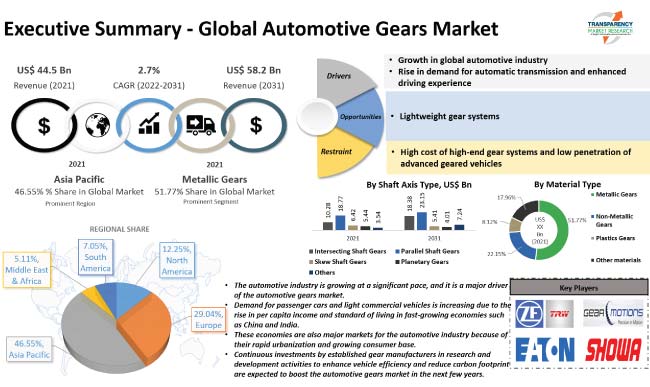The automotive industry is a major contributor to the economy of many countries. Its products include cars, trucks, and motorcycles. It is a lucrative market for major players, who are investing heavily in R&D.
Rising consumer demand for advanced technology and safety features will drive growth in the industry. The shift toward shared mobility will also increase demand for vehicles that are upgradable.
Increase in per capita income
The automotive industry is one of the fastest-growing global economic sectors. Its growing demand is fueled by increasing per capita income, better roads, and the adoption of advanced technologies like driver assistance systems. In addition, the industry is also experiencing increased interest in electric cars and autonomous vehicles, which are expected to reduce traffic congestion and pollution.
However, the industry faces many challenges. One of the biggest challenges is environmental regulation. The car industry contributes a significant percentage of global carbon emissions and is responsible for 25 % of the world’s oil consumption. It is important to make sure that the industry takes steps to address these issues.
Another challenge is economic volatility. A downturn in the economy can significantly affect sales and profits. Therefore, companies must be prepared for this risk and ensure that their business model is resilient.
As the industry evolves, customers are evaluating OEMs based on total cost of ownership and quality. This has forced manufacturers to improve production processes and reduce time-to-market. In the future, automotive companies will focus on building cars that are a good value for money, as well as providing exceptional customer service. This will lead to higher sales and increased profitability. It is also important for them to have a good reputation as an employer, which will increase employee retention.
Increase in number of passenger cars
The automotive industry has a huge impact on the economy. It supports more than 9 million American jobs, and it creates cutting-edge facilities and transportation infrastructure to export finished cars and trucks to points around the world. In addition, the auto industry has a significant environmental footprint, and it is responsible for producing a wide range of pollutants. These include nitrogen oxides, particulates, and carbon dioxide.
The demand for passenger automobiles is increasing owing to the rise in per capita income in developing nations, and people are highly inclined towards convenience. Furthermore, the adoption of advanced technologies is also boosting the automotive industry growth. These technologies include electric vehicles and autonomous vehicles. The demand for these cars is growing because they are eco-friendly and safer. Moreover, they help in reducing traffic congestion and increase road safety.
The automotive industry is also expanding as a result of the shift toward shared mobility solutions and data-driven services. This will expand the automotive revenue pool by up to 30 percent and could lead to a new business model for Original Equipment Manufacturers (OEM). The industry is currently facing two key challenges. First, consumers hunkered down during the COVID-19 pandemic and halted light vehicle sales. Second, raw material prices have risen significantly. This has increased the price of passenger cars. As a result, carmakers are shifting their production models.
Increase in number of e-rickshaws
E-rickshaws are a popular mode of transportation in India. They emit fewer pollutants than other vehicles and are affordable to operate. They are also a great option for last-mile delivery. However, the industry is facing a number of challenges. Among the most pressing issues are high inventories, price volatility of raw materials, and regulatory pressure to produce more environmentally friendly vehicles. Moreover, manufacturers will need to redefine their product value and expand into new business models in order to thrive.
The global automotive industry is set for a major shift. Traditional car manufacturers will face increased competition from mobility providers, tech giants, and specialty OEMs. This will require them to reduce costs, improve fuel efficiency and emissions, and become more capital-efficient. They will also need to be more transparent with their customers and suppliers, and offer a range of vehicle and service options.
Despite these challenges, the automotive market is expected to grow in 2023. Rising consumer demand for electric vehicles and technological advancements will drive growth in this sector. In addition, emerging economies will provide opportunities for manufacturers to increase sales and profit. However, the COVID-19 pandemic may hamper growth in the long run. This could be especially true for premium brands that rely on technology as the core of their positioning. Nevertheless, the sustainability imperative will continue to reward innovative brands.
Increase in demand for safety features
The automotive industry has seen a significant increase in demand for safety features in automobiles. These devices are designed to prevent accidents and mitigate the impact of collisions, and many countries have strict laws that require car manufacturers to include them in vehicles. They can either work automatically or require driver activation. Common automotive safety systems include seatbelts, airbags, anti-lock brakes, traction control, and tire pressure monitors.
Several advanced vehicle safety features have become standard equipment in many vehicles, including backup cameras and adaptive cruise control. According to a recent survey, 80.6% of motorists said they would pay more for a backup camera, which became standard in vehicles after 2018. Other highly valued safety features include blind spot monitoring and forward collision warning. These features help reduce the number of fatalities on the road and make driving safer.
The COVID-19 pandemic led to a slowdown in the automotive market, but consumer demand is returning to pre-pandemic levels. This increase in demand has increased the need for premium cars, which have a greater focus on technology and safety. This demand is expected to drive the global automotive motors market in the coming years. However, the market faces challenges such as changing consumer preferences and stringent environmental norms. Moreover, the price volatility of raw materials may hamper the growth of this market in the future.

